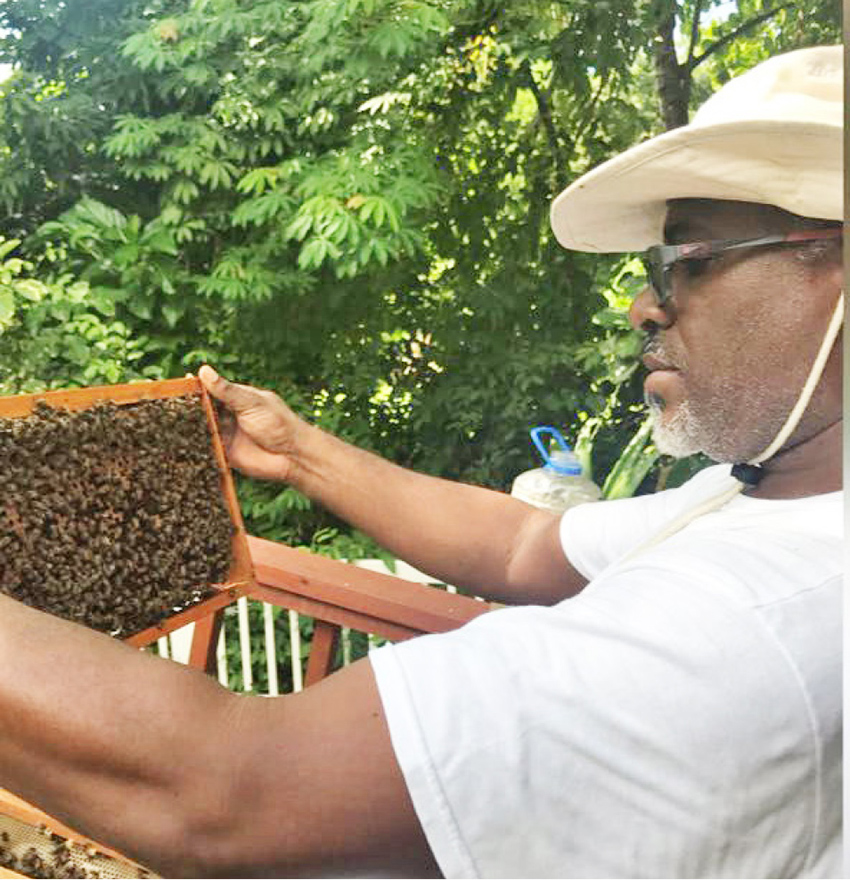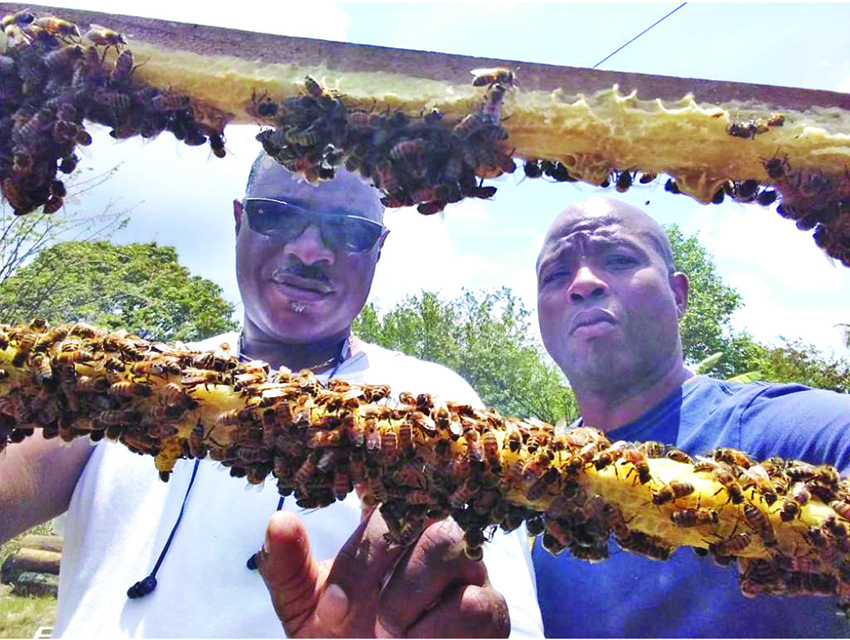Last week, the country was very saddened to learn of the death of a Mrs. Matthew who was attacked by bees. This incident was extremely unfortunate and has left the families and the community with many questions, one of which is: why did the bees attack?
There are potentially two answers to this question. The first answer is directly related to the level of bee education of the community members. Bees are affected by scents, for example, if someone uses highly scented soaps or perfumes, the bees will be drawn to them and may attack. This is one of the foundational principles that is taught in beekeeping that should be taught to communities that live with bees, whether reared or feral. Community apiaries should educate the people who live in their communities of the best practices with respect to bees.
The IAC believes that beekeeping should be mandatory training so that all Saint. Lucians learn how to safely live with these important pollinators. Globally, there is a thrust towards safeguarding pollinators, including honeybees, since their decline due to climate change, deforestation and chemical use. It is for this reason that we have developed an online basic beekeeping course, where persons can learn all the basics including health and safety in dealing with bees.
The second answer to this question lies in the genetics of the bees. The Western Honeybee was first introduced in 1600 and it was chosen by the Colonists for pollination of crops, honey and wax production, and its generally gentle demeanour. This is evidenced by historical pictures of beekeeping in Saint Lucia, which depict beekeeping at that time wearing nothing more than a veil.
However, Africanized bees, which are highly adaptive and extremely defensive, have been threatening and invading Caribbean islands from South America. Trinidad for example, has lost all other subspecies of the Western Honeybees, Apis mellifera, because of the migration of Africanized bees from the mainland South America. As a result of this, in the 1970s and 1980s, Trinidad had to amend their beekeeping practice to accommodate the more aggressive Africanized bees. An important change in their beekeeping practice was the stipulation that an apiary must be at least 600m from the nearest home, building or road, thereby preventing any attacks on people from reared colonies of bees.

Since the introduction of the Western Honeybee to St. Lucia, there has been little to no documentation on migration and genetic analysis of local bees. As a result, there is an unsubstantiated belief that St. Lucia’s bees have remained the same for over 400 years.
In 2019, members of the Iyanola Apiculture Collective (IAC) led a project, under the Japan Caribbean Climate Change Project (JCCCP), to evaluate the genetics of bees on St. Lucia, provide training in queen rearing and conduct instrumental insemination of virgin queens.
French experts, based at APINOV were contracted to conduct the genetic testing and training. They found that local bees were no longer pure strains and the samples contained characteristics of Africanized bees. Their report states “The population of Apis mellifera in St. Lucia is similar to the other islands of the French West Indies 5 years ago. It means an Africanized bee, a hybrid of European and African bees. The hypothesis is confirmed by the characteristic behaviour of this honeybee population…This Africanized hybrid honeybee quickly supplanted the other subspecies of bees and colonized the entire tropical part of the American continent. Honey yields have unfortunately dropped in all the countries affected by this hybrid.”
Two SALCC students (2022), under the guidance of Dr. Marie-Louis Felix and the President of the IAC, recently concluded a scientific research project to evaluate the genetics of bee samples collected at apiaries not included in the APINOV (2019) assessment. Their findings did not differ from those of APINOV, since they also found that there was hybridization at the newly sampled locations.
In total, the APINOV (2019) and SALCC (2022) reports included samples taken from approximately 30 colonies from across the island, most of which indicate that there is some level of hybridization of bee stocks to include Africanized traits. These two reports clearly highlight that there is an urgent need to expand the assessment to more apiaries to provide more evidence for hybridization of local bees.
So, what does hybridization have to do with the death of Mrs. Matthews? Well, if our local bees contain some level of Africanization, this could explain why they attacked. Going forward, the St. Lucian Government may potentially need new regulations in beekeeping, in order to safeguard and prevent future attacks, such as, reconsidering the acceptable distance from homesteads for the establishment of an apiary, as was done in Trinidad. However, in a small island of only 616.9km2, finding lands for beekeeping is already an extremely difficult task.

As a Master Beekeeper with over 10 years’ experience, I however believe that the solution to the hybridization of our bees is to fight genetics with genetics. The queen is the queen because she controls the genetics of the colony: drones are male bees with the exact same genetic makeup as the queen of a colony whilst workers are the fertilised offspring of the queen. The queen is therefore the epicentre of genetics in the colony and as such, if she is influenced or changed, then the genetics and behaviour of the colony also changes.
To reintroduce favourable strains in St. Lucia, we must replace the hybridised queens with favourable, fertilised queens of our preferred subspecies. This will also change the genetics of the workers and the drones, thereby changing the entire colony. The island has an estimate of only 4,000 hives. Replacing queens for all these hives is a manageable and achievable task, with the right support and funding.
Choosing the option of replacing the queens would allow persons who currently conduct beekeeping in community spaces, close to other homesteads, to continue their practice without harming others. It would also reduce the stress of finding new locations for beekeepers to conduct their practice. Most importantly, requeening all the local colonies would allow St. Lucia to regain its historic, natural population of bees.
To this end, the IAC has over the past 2 years, with support of the Global Environment Facility Small Grants Programme (GEF SGP), donated over 250 queens with favourable traits, to beekeepers across the country and trained beekeepers in basic beekeeping.
The attack in Vieux Fort was indeed unfortunate and can be prevented in future with proper community education on bees as well as requeening the hives to reintroduce more favourable traits into the colonies.
The IAC remains committed to supporting the education and development of beekeeping in St. Lucia. We provide training and queens, which can contribute to the prevention of future tragic events like this.
Finally, we look forward to working with the Government of Saint Lucia in addressing issues of policy, the education of communities and the use of more scientific methods in the development of apiculture in Saint Lucia.





